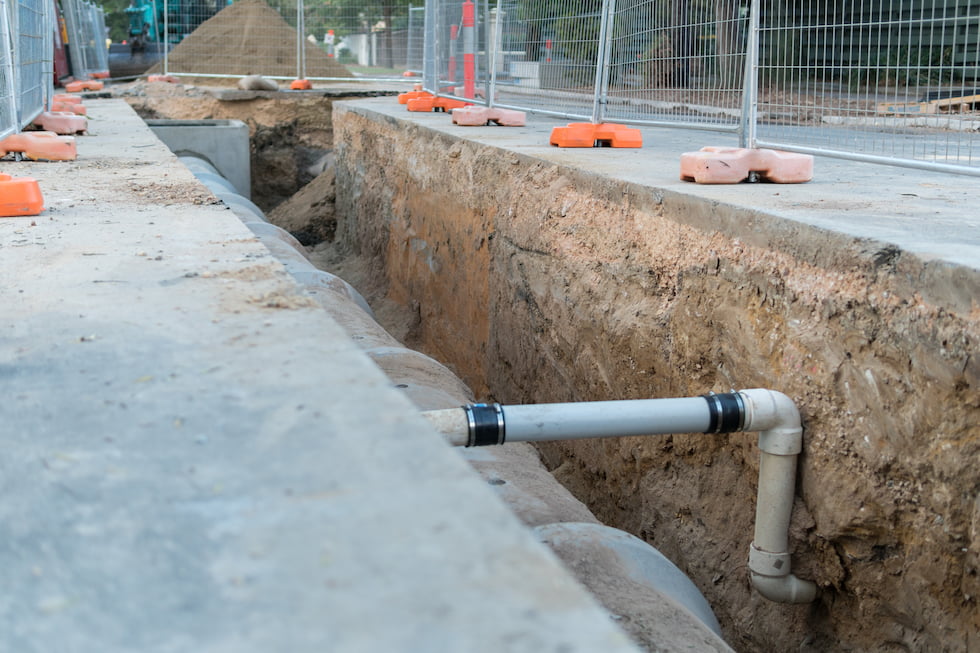
Water infrastructure in the United States is aging—many drinking water systems and wastewater treatment facilities are nearing the end of their life cycles of 75 to 100 years, resulting in contamination and economic disruptions to communities. Leaking pipes lost $7.6 billion worth of treated water in 2019, according to a new report released last week from the American Society of Civil Engineers (ASCE) and Value of Water Campaign. This loss is projected to more than double over the next 20 years, reaching $16.7 billion in 2039.
The report, “The Economic Benefits of Investing in Water Infrastructure: How a Failure to Act Would Affect the U.S. Economy Recovery,” found that annual costs to American households due to water and wastewater failures will be seven times higher in 20 years than they are today. Annual costs are projected to rise from $2 billion in 2019 to $14 billion by 2039.
The rate of water main breaks in the U.S. rose by 27 percent between 2012 and 2018 to roughly 300,000 breaks per year—equivalent to a break more than every two minutes. Of course this impacts households, but American businesses most reliant on water are also affected and are projected to spend $250 billion in 2039 on water service disruptions.
In 2019, total capital spending on water infrastructure was $81 billion short of the capital needed. If funding needs and infrastructure investment trends continue in this way, the annual gap will grow to $136 billion by 2039.
Also in 2019, water service disruptions resulted in $51 billion economic losses for 11 water-reliant industries such as education, health services, retail, construction, manufacturing and more. With that trajectory, water-reliant businesses will be out an estimated $116 billion by 2029 from service disruptions. This figure and will increase to $264 billion by 2039.
Damage and flooding from increasing storms, in addition to water shutoffs and deteriorating infrastructure, are all production costs for businesses and prices for consumers that are expected to climb. More than $625 billion in business sales (gross output) would be lost over the next 10 years, according to the report. By 2039, that number will near $3.9 trillion.
If investments do not increase, reductions in wages and disposable income will result and by 2039, 636,000 jobs would be lost annually.
“As a nation, we have deferred crucial investment in our vital water resources for too long and we’re seeing the adverse results play out now,” said ASCE President K.N. Gunalan, “Guna,” Ph.D., P.E. “The 2019 investment gap of $81 billion outlined in this report has held back businesses, hurt American pocketbooks and above all, threatened public safety. In addition, investing in water infrastructure now will provide a path to economic recovery that we desperately need as a result of the COVID-19 pandemic. Our leaders must act immediately to ensure our systems do not continue to deteriorate and bare greater costs in years to come.”
If investment is increased to address these shortfalls now, the U.S. GDP would grow by $4.5 trillion in 20 years according to the ASCE and Value of Water Campaign report.
This investment would create 800,000 new jobs and household disposable income would rise by more than $2,000 per household.
“Investing in our water infrastructure as a nation allowed communities to flourish. It dramatically improved public health and set our economy up for success. At a time when so much is at stake, we cannot continue to ignore the urgency of the situation. Communities cannot shoulder the burden of capital improvements and maintaining aging water systems all by themselves. We have to come together as a nation and prioritize investing in our water infrastructure once again,” said Radhika Fox, CEO of the US Water Alliance, which coordinates the Value of Water Campaign.
A research team comprised of EBP, Downstream Strategies and the Interindustry Forecasting Project at the University of Maryland (INFORUM) worked with ASCE and the Value of Water Campaign to develop the report.

